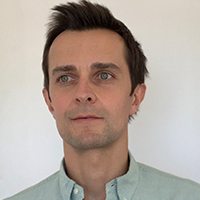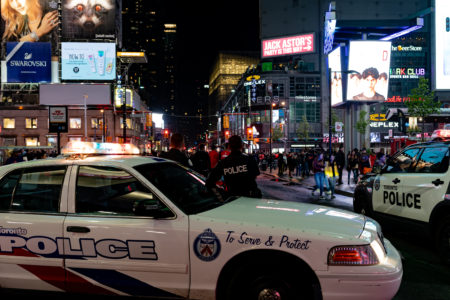
In July, US President Donald Trump promised to send “a surge” of federal law enforcement forces into American cities as part of a crackdown on crime. The additional troops will be allocated to what he called “classic crime fighting,” a violence prevention strategy typified by attempts to control and criminalize offenders. “We will find them, arrest them and prosecute them. They will be in jail for many years to come,” he said.
Cynics pointed out that the president was simply attempting to drum up enthusiasm among his base before November’s presidential election. In doing so, however, he was also signalling an important divide in the debate about America’s attempts to deal with crime. On one side are those who – like Trump – want more policing; on the other are those who want less police and more social spending.
Similar discussions are echoing across Canada. Demonstrators here have been demanding that police forces be defunded and demilitarized. Canadian pro-policing advocates, by contrast, say that defunding police would be a massive error. While the two sides argue, skyrocketing gun violence in cities like Toronto and Calgary has added an urgent imperative to stop violent crime on our side of the border. To this end, perhaps there is something to be learned from what is happening down south.
Law and disorder
Law and order policing initiatives are nothing new in the US. Since the 1970s, the federal and state governments have relied heavily on arrest, prosecution and jail as fundamental crime-fighting strategies. Perhaps the most well-known and most controversial such measure is the 1994 Violent Crime Control and Law Enforcement Act – the so-called Clinton crime bill – which included “three strikes” mandatory life sentence for repeat offenders, funding for 100,000 new police officers and large investments in prisons.
Today, a country with just over four percent of the world’s population is home to about one-quarter of the world’s prisoners, at enormous economic cost to taxpayers and at perhaps even steeper social cost to the racialized communities most likely to be targeted for arrest and incarceration.
Yet there is no conclusive evidence that tough-on-crime strategies have paid off. True, America’s crime rate has fallen steadily for 25 years, but nobody can pinpoint for certain why. What is more, violent crime is still at epidemic levels in places like Chicago, New York City, Los Angeles and in other major urban centres. Looking specifically at police-centred efforts to address gangs in the US – gangs are often connected to gun violence in Canadian cities – also reveals little evidence of success.
The results are just as disappointing in other places, too. Hard policing approaches have been tried and have failed to suppress gangs in Latin America, for example, while militarized policing against gangs and drugs in South Africa has also yielded no discernible gains. Indeed, even the efficacy of the 30,000-troop surge America applied during the Iraq War – something Trump seems to be drawing inspiration from for his current domestic initiative – only helped bring violence down temporarily. That military surge did little to stop the rise of the Islamic State there just years later, because a focus on force failed to attend to the roots of violence.
In short, more forceful security measures might make for good politics, but they usually make for bad public policy. Given all of this, Canadians should reasonably ask: is there any place for law enforcement in violence prevention efforts?
Yes. But policing should be limited and must be pursued as part of holistic prevention.
One case study that Canadian policy-makers might look to is a project called Operation Ceasefire, an anti-gang intervention from Boston that was shown to have dramatically decreased murder rates. Its use of policing was not indiscriminate, but targeted specifically at worst offenders to disincentivize such behaviour. At the same time, the project also invested heavily in job skills training, substance abuse counselling and community education efforts to incentivize discontinuation of violent activities. Operation Ceasefire is just one intervention option that provides a sense of what a rounded violence prevention strategy might look like.
Violence-affected communities need social programs, community development and policing. They usually only get some version of the latter. Almost all of Ontario’s funding for community safety and well-being ends up just padding police budgets. This leaves fewer dollars to invest in initiatives that address poverty, disempowerment, peer pressure, substance abuse and the other root causes of violence. In Toronto, the police make up the single largest line item in the city’s operating budget, receiving more than 10 times as much funding as employment and social services.
Where to reinvest divested police funds, then? Mental health services are one area that has received much attention. Toronto city council, for instance, recently passed a motion for the “creation of non-police-led response to calls which do not involve weapons or violence, such as those involving individuals experiencing mental health crises.” This is a start. Still, as important as it is to ensure an appropriate and humane mental health response, violent crime is not primarily a mental health issue.
Violence is brought about by a complex interplay of individual, relationship, community, and societal factors. If the ultimate goal is to stop violence before it begins, prevention measures have to tackle a range of risk factors that increase the likelihood of violence; they have to promote the many protective factors that buffer against that risk. More and more auspicious reforms will be needed to improve the safety of people and communities in Canadian cities, something more than rearranging police funding into mental health, or expanding the use of body cameras by police, which is another recent Toronto city council idea.
Re-considering the policy options
We might again look to the America for available policy options to prevent violence. Research in the United States, for instance, indicates that increasing the time children spend in school can decrease violent arrests. Investing in education has other important payoffs, too; higher educational attainment can lead to declines in crime. Teaching youth vital life skills related to goal-setting, decision-making, communication and conflict resolution techniques also decreases the odds they will join gangs. In particular, offering sessions that help slow down their thinking to avoid aggression in high-stakes situations has demonstrated high prevention returns. Mediating disputes among those already in gangs is another effective way to reduce violence without resorting to arrest and incarceration. Pairing neighbourhood patrols and various violence prevention initiatives with counselling for gang participants and their families has been shown to help decrease killing and serious violent crimes in some gang-affected areas.
What works in an American city might not be always be right for cities in Canada. But it does show what violence prevention options are out there. Canadians may want to consider all of them as they think about how police budgets might be reinvested. In particular, do not ignore the types of educational programs, social, services and community-based initiatives that have been defunded in places like Toronto over the past two decades.
Community advocates have noted that the rising gun violence in Toronto is being fuelled by pandemic-related closures to community programs. If they are right, more must be done to ensure that these programs not only stay open now, but that they are expanded in years to come.
If we are to take lessons from the United States on violence prevention, let us take the right ones. A surge in funding is needed for support groups, after-school activities, rehabilitation, social services, job training and the like. Targeted policing can be part of a successful public safety solution, especially if there is follow-through on promises to remedy police brutality and the over-incarceration of Black Canadians and Indigenous people.
However, policing is reactive, and can only be an adjunct to more expansive socially oriented prevention initiatives – not the other way around. The sooner Canadians embrace this, the sooner we can start funnelling sufficient resources into the types of policy options that have a chance at bringing down the death count.
Photo: Shutterstock/By zef art








